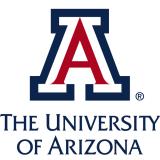Drought Influences on Post-Wildfire Flooding and Debris Flow Hazard
While there is a strong connection between drought and wildfire in the western United States, how drought influences the post-wildfire environment is less well-understood, especially at shorter (1-3 year) timescales. The hazards posed by post-fire flooding and debris flows in burned landscapes depends on burn severity, underlying geology and topography, and vegetation recovery following the fire. Because vegetation recovery depends on weather and climate conditions, drought may play an important role in controlling the likelihood and magnitude of debris-flow hazards during the recovery process.
What are post-wildfire floods and debris flows?
Runoff is enhanced following fire due to changes in soil properties, loss of canopy cover, and destruction of organic material on the soil surface. Runoff may also flow much faster over burned hillslopes compared to unburned hillslopes because vegetation, which would normally provide resistance to flow, is absent. During intense rainfall, this can cause flooding to occur much faster than under normal conditions (hence, ‘flash’ flooding). Debris flows are sediment-rich slurries (think flowing concrete) resulting from surface runoff entraining hillslope and channel material such as soil, logs, and large boulders as it moves downslope. Both flash floods and debris flows pose significant risks to life and property for years after the immediate threat of wildfire has ended.
How long after a fire should we be concerned?
Post-fire geological hazards are often most accentuated during the first wet season following a fire. Hazards from enhanced runoff are typically negligible after five years. A key question centers around how drought conditions influence vegetation recovery rates, and hence post-wildfire hazards, after 2-4 years of recovery. Initially, vegetation cover is high and debris flow likelihood is low. The expectation is drought will lower the rate at which vegetation recovers, resulting in higher debris flow likelihood for a longer period following the fire.
Wait, droughts can make post-fire hazards worse?
Yes! Droughts are characterized by below-normal precipitation totals and/or above-normal evaporative demand. Debris flows or flash floods, however, are produced by short (15-30 minutes), high-intensity bursts of rainfall. These bursts are often caused by the development of thunderstorms and can occur during both winter storms and during the summer. This means it is possible to have drought conditions (e.g., a precipitation deficit) that slows the rate of vegetation recovery while still experiencing the type of rainfall that can produce post-fire hazards.
What tools currently exist to assess post-fire debris-flow hazards?
Following a fire, Burned Area Emergency Response (BAER) teams perform post-fire assessments of burn severity, geology, and values-at-risk. The USGS landslide hazards program uses this information in conjunction with computer modeling to create debris-flow hazards maps that resource and emergency managers can use to assess potential hazards. These models are most applicable to understanding potential hazards in the first year after a fire.
How does drought influence vegetation recovery and, ultimately, post-fire hazards?
Given the links between vegetation, runoff, and erosion, anything that impacts vegetation recovery has the potential to influence the likelihood of post-fire flood and debris flow hazards. Ongoing research aims to use field measurements of soil and vegetation recovery along with computer models to determine the extent to which flooding and debris-flow processes are controlled specifically by vegetation. By quantifying the impact of vegetation on these processes, we can understand how drought and the rate of vegetation recovery influence the amount of time that landscapes remain vulnerable to post-fire hazards. The ultimate goal of this work is to identify relevant drought and vegetation recovery metrics, that can be monitored remotely using data derived from satellites (e.g., Google Climate Engine), to inform how post-fire hazards change with time.
Questions or suggestions?
For more information, please contact Luke McGuire (lmcguire@arizona.edu) or Benjamin Hatchett (Benjamin.Hatchett@dri.edu).






